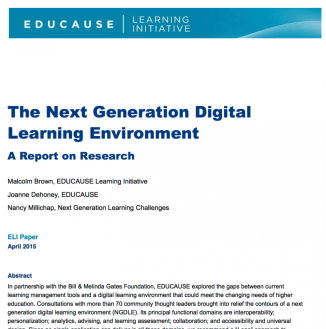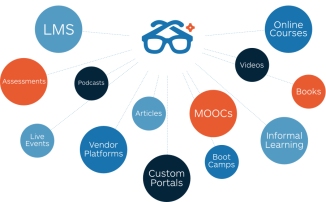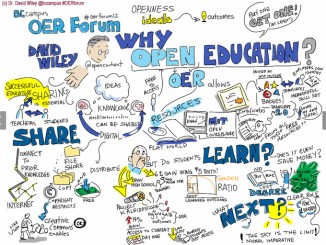
- Barth 1971: Open Education is used here to designate a general approach to teaching and learning which presumes the child’s right and competence to make important decisions; views the teacher more as a facilitator of learning than a transmitter of knowledge, and abundant alternatives and choice for students
- Katz 1972: Open education movement is the commitment to humanistic values including self-determination, freedom of children and aesthetic appreciation.
- Resnick 1972: while the open education movements and educational technology are often seen as mutually hostile, the challenge in education for the future is to find ways to develop the full range of each individual’s capacities
- Paquette 1979: Open Pedagogy is not an assemble of pedagogical processes applied in a classroom that allow results as any other pedagogy. OP influences the way of thinking and acting, it is an innovative way to envisage the educational act (..) it is focused on the interaction that exists in a class between the students and the educational environment (…) it is founded a. on the respect of individual differences, b. on the individuals’ beliefs, c. on the indirect influence of the educator and d. on a natural process of apprenticeship
- Paquette 1995: 3 sets of foundational values of open pedagogy, namely: autonomy and interdependence; freedom and responsibility; democracy and participation.
- Gremmo and Riley 1995: “Autonomous learning” has been shown to be a fruitful approach and one that impinges on every aspect of language learning theory and practice, in all parts of the world. However, one important lesson which has been learnt from this work is that self-directed learning schemes and resource centers have to be planned locally, taking into account specific institutional requirements and expectations, the particular characteristics of the learners and staff, including the socio-cultural constraints on learning practices. There is no universal model for setting up a self-directed learning scheme (…) One of the first “tailor-made” resource centres was established by CRAPEL at the University of Nancy (Riley and Zoppis, 1974; also in Riley, 1986)
- Laura Gibbs and Stacy Zemke 2015: 1. open = agency — Learners are individuals and independent agents within the learning process. They are allowed to operate independently and explore with personal freedom./ 2. open = choice — Learners choose their own pace, their own direction, and their own connections./ 3. open = expansion — The learning network is an open-ended and ever-expanding network of nodes. Each node in the network represents is a connection, a possibility for learning. Everything in the network is a project./ 4. open = creativity — Openness translates to rich possibilities that inspire new perspectives and ideas./ 5. open = student-constructed — Learners take responsibility for their learning networks and are active participants in its planning and growth./ 6. open = open-ended problems — Learning design is focused less on specific outcomes or competencies than on process. It is about empowering learners to create real solutions to real problems./ 7. open: unmeasurable outcomes — Traditional outcome measurement implies the learning is static and closed./ 8. open = risk and goodness — Choosing often leads to unexpected and unpredictable results. While there is risk associated with the unknown, there is even greater reward and goodness.
- Wiley 2015: open= free+permissions/ free and unfettered access, perpetual, irrevocable 5R permissions (retain, reuse, revise, remix, redistribute), open= democratizes innovation, permits innovation (…) open pedagogy: a set of things you can do when outcomes, assessments, and resources are open that you cannot do otherwise (…) openness facilitates the unexpected.
- Downes 2016: “In the case of personal learning, the role of the educational system is not to provide learning, it is to support learning. Meanwhile, the decisions about what to learn, how to learn, and where to learn are made outside the educational system, and principally, by the individual learners themselves”
References
Dr Vivien Rolfe, University of the West of England, Bristol UK. Open. But not for criticism? In Opened16 Conference, available here
Claude Paquette “Quelques fondements d’une pédagogie ouverte.” Québec français 36 (1979): 20–21. available here
MARIE-JOSI~ GREMMO and PHILIP RILEY , AUTONOMY, SELF-DIRECTION AND SELF ACCESS IN LANGUAGE TEACHING AND LEARNING: THE HISTORY OF AN IDEA, System, Vol. 23, No. 2, pp. 151-164, 1995 Elsevier Science Ltd Printed in Great Britain, available here
NEXTTHOUGHT, Laura Gibbs and Stacy Zemke, Eight Qualities of Open Pedagogy, available here
David Wiley, The Open Education Infrastructure, Keynote presentation for Open Apereo 2015, available here (Frischmann’s, Von Hippel’s and Thierer’s work)
Downes 2016, Personal and Personalized Learning, available here
Tannis Morgan, Open pedagogy and a very brief history of the concept, available here
Image available here
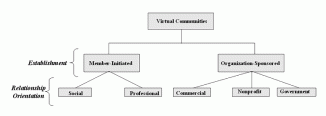

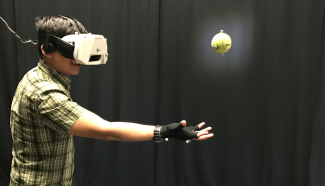
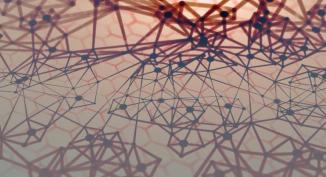


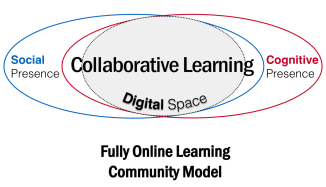 The Fully Online Learning Community (FOLC) is a reduced social-constructivist learning model based on communities of inquiry model (CoI). FOLC particularly responds to four problems related to the transformation of higher education in an increasingly globalized and digitalized knowledge society:
The Fully Online Learning Community (FOLC) is a reduced social-constructivist learning model based on communities of inquiry model (CoI). FOLC particularly responds to four problems related to the transformation of higher education in an increasingly globalized and digitalized knowledge society: